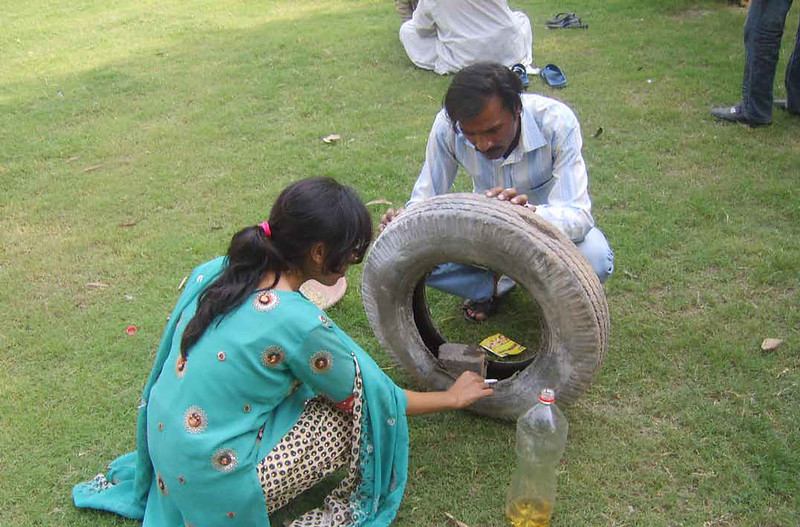Common Diseases in Pakistan
 Pakistan, officially known as the Islamic Republic of Pakistan, is located in South Asia. Pakistan is the sixth-most populous country in the world, with about 201 million people. High population, unfavorable climatic conditions and the lack of educational and economic development put Pakistani citizens in an unhealthy environment.
Pakistan, officially known as the Islamic Republic of Pakistan, is located in South Asia. Pakistan is the sixth-most populous country in the world, with about 201 million people. High population, unfavorable climatic conditions and the lack of educational and economic development put Pakistani citizens in an unhealthy environment.
According to the World Health Organization (WHO), Pakistan ranks 122 out of 190 countries in terms of healthcare standards. Here are some of the most common diseases in Pakistan:
- Dengue Fever
Dengue fever is a mosquito-borne disease that is transmitted by the bite of an Aedes mosquito infected with the dengue virus. It cannot be spread directly from person to person. Some of the disease’s symptoms include high fever, headaches, muscle pain, vomiting and skin rash. Dengue fever may be mistaken for the flu or other viral infections. However, dengue fever is a severe form of the virus and may cause serious diseases including enlargement of the liver and failure of the circulatory system if not treated in time.In 2011, there was a dengue outbreak in Pakistan, and more than 250,000 suspected cases of dengue fever were reported. Between 2009 to 2011, dengue fever caused 348 deaths in Pakistan. In order to prevent outbreaks of dengue fever from happening again in the future, Pakistan’s government strengthened surveillance and general preventive measures, improved clinical management of patients and implemented targeted vector control activities, according to the WHO. In addition, the government also organized public awareness campaigns for risk mitigation. - Tuberculosis
Tuberculosis (TB) is an infectious disease that affects the lungs, which can be spread by coughing and sneezing. The WHO claims that without proper treatment, up to two-thirds of people that are infected with tuberculosis will die. Tuberculosis is one of the common diseases in Pakistan that can have irreversible consequences. Symptoms of tuberculosis include coughing, fever, fatigue, chills and loss of appetite. According to the WHO, Pakistan was ranked eighth out of the 22 countries in the world that are most highly prone to tuberculosis. About 420,000 new tuberculosis cases are reported every year in Pakistan.The government of Pakistan set up the National TB Control Program (NTP) to help reduce the risk of getting tuberculosis. According to the NTP official website, it provides skill training for medics, paramedics and lab technicians. In addition, the program offers a free supply of anti-TB medicines to all diagnosed cases. - Diabetes
Pakistan has the highest diabetes rates in all of South Asia, as about seven million people are affected by the disease. Diabetes is a disease that affects the patient’s body’s ability to respond to the hormone insulin, which then causes unusual metabolism of carbohydrates and high levels of glucose in the blood and urine. If not treated, the high glucose levels can cause damage to blood vessels and parts of the body.The high diabetes rate may be a result of the unhealthy food industry in Pakistan. The Diabetic’s Institute of Pakistan (DIP) has been fighting against diabetes since it was founded in 1996. DIP offers diabetes awareness programs to provide useful knowledge to the patients and the public, as well as pharmacy services for patients. - Cancer
Representing 8 percent of all deaths in Pakistan, cancer is a major health problem for Pakistanis. Lung cancer and breast cancer are the most common forms in Pakistan. A recent study shows that about one in every nine women in Pakistan has breast cancer. Pakistan also has the highest consumption of tobacco in South Asia. A large number of the patients are not aware that they have cancer until they are in critical stages of cancer, and they usually do not have the access to proper treatment.In 2013, Pakistan established a cancer registry that compiles data on cancer patients from across the country, which is an important step in cancer prevention and control in Pakistan. In 2016, 18 cancer hospitals in Pakistan were working on hospital-based registries. These hospitals provide about 80 percent of the cancer treatment in Pakistan. - Hepatitis A and E
Even though there are vaccines available for hepatitis, hepatitis A and E are still common diseases in Pakistan. Hepatitis A is a viral liver disease which is transmitted through contaminated water or unhealthy food. In addition to the vaccine, safe water supply, healthy food, improved sanitation and handwashing are all effective ways to fight the disease.Hepatitis E is a liver disease that is usually self-limiting. However, it may cause acute liver failure. According to the WHO, East and South Asia have the highest prevalence of hepatitis in the world. According to Pakistan’s health department, the government is using all channels of communication to increase awareness of hepatitis among the public. The government also provides medicine and vaccines for the patients.
These common diseases in Pakistan are a major health problem for the country’s citizens. The Pakistan government and many other organizations, including the WHO, are working on increasing public awareness and providing medical programs to train more doctors. However, the Pakistan government still needs to provide access to more hospitals, as well as better healthcare, that can make proper treatment affordable for the public.
– Mike Liu
Photo: Flickr
